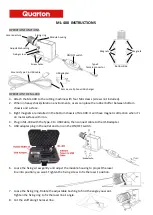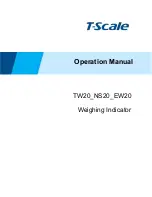
21
In measuring super-thin materials, there might be such erroneous results as “dual deflection”
sometimes. That means that the displayed reading is twice as big as the actual thickness. Another
error is known as “pulse envelope, cyclic jumping”. The result is bigger than the actual thickness.
To prevent these errors, the critical thin materials should be measured repeatedly for verification.
11.2 Rusty spots and eroded pits
Rusty spots and eroded pits may cause the readings to change irregularly. Under extreme
circumstances, there is even no reading. It is hard to discover a small rusty spot. When a eroded pit
is found or in suspicion, care is needed to measure the area. Different positions of angles of the
probe cross talk isolating board may be selected to carry measurements for many times.
11.3 Error in materials identification
Though the device has been corrected by one material, there is still mistake when measuring
another materials, so proper sound velocity should be selected.
11.4 Wear of the probe
The probe surface is made of acrylic resin. After using for a long times, the roughness may
increase, thus causing the sensitivity declines. If it has been determined that the error is caused by
roughness, the sand paper or oil grinding stone may be used to grind the surface of the probe so
that it will become smooth and parallel. If the reading is still unstable, the probe must be replaced.
22
11.5 Use of the ZERO-key
The key is used only for correction by coupling the probe onto the standard test block on the
instrument panel. It is not to be used on any other kinds of test blocks. Otherwise it will cause
measurement errors.
11.6 Laminated and compound materials
It is impossible to measure the uncoupled laminated materials, because the ultrasonic wave cannot
penetrate the spaces that have not been coupled. As the ultrasonic waves can not spread in a
uniform speed in compound materials, the instruments measuring thickness according to the
ultrasonic deflection theories are not applicable to measuring laminated or compound materials.
11.7 The effect of the metal oxide layer
Dense oxide layer may be found in some metals, such as aluminum etc. This oxide layer contacts
with the substrate tightly without clear interface. But ultrasonic wave transmits with different
velocities in these two materials, which will cause measurement error. Different thickness of oxide
layer will result in different measurement errors. It should be cautious to deal with this kind of
situation. It’s applicable to select one block of testing material as sample, measure its thickness by
vernier caliper or micrometer and use this sample to calibrate the gauge.

































